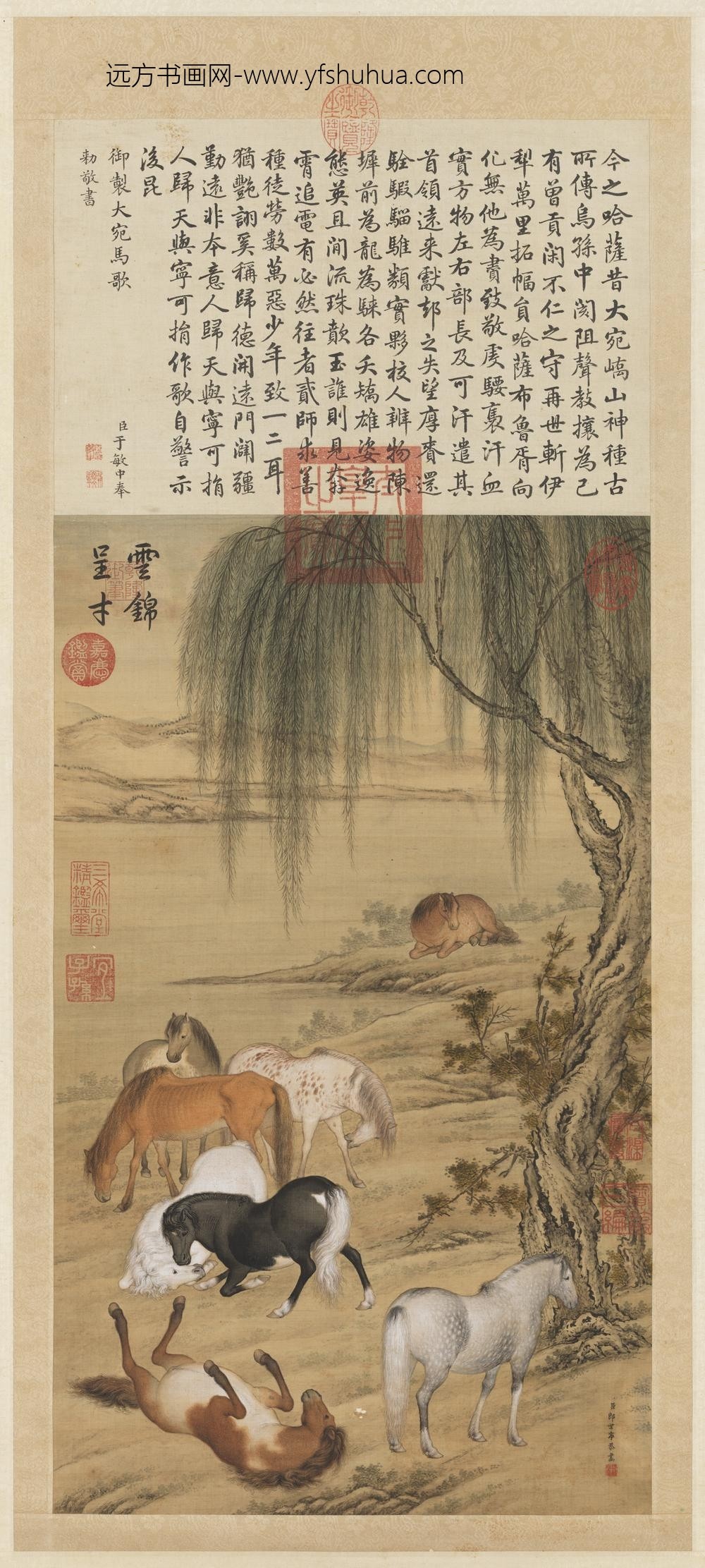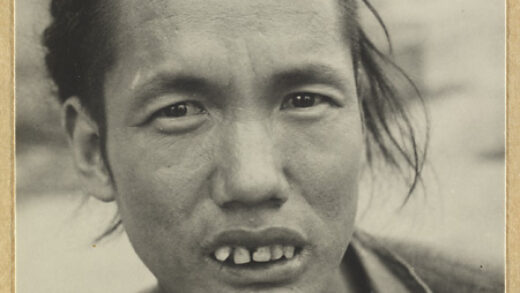【作品基本信息】
| 作者 | 郎世宁 |
| 品名 | 云锦呈才图轴 |
| 朝代 | 清代 |
| 文件大小 | 18.01MB |
| 分辨率(DPI) | 300×300 |
| 像素大小 | 1643×3654 |
| 尺寸(CM) | 13.91×30.93 |
| 作品数量 | 1 |
| 作品收藏 | 台北故宫博物院 |
| 图片格式 | 默认提供TIF和JPG两个版本 |
基本数据
| 藏品类型 | 绘画 |
| 品名 |
清郎世宁云锦呈才 轴 Eight Horses |
| 分类 | 绘画 |
| 作者 | 郎世宁 |
| 数量 | 一轴 |
典藏尺寸
| 【位置】 | 【尺寸】(公分) |
| 本幅 | 59×35.4 |
| 诗塘 | 23.6×35.4 |
| 【质地位置】 | 【质地】 |
| 本幅 | 绢 |
| 诗塘 | 绫 |
臣郎世宁
乾隆御笔
敏中印、报国文章
印记资料
| 【印记类别】 | 【印记】 |
| 鉴藏宝玺 | 乾隆御览之宝 |
| 鉴藏宝玺 | 宝笈三编 |
| 鉴藏宝玺 | 太上皇帝之宝 |
| 鉴藏宝玺 | 嘉庆御览之宝 |
| 鉴藏宝玺 | 嘉庆鉴赏 |
| 鉴藏宝玺 | 石渠宝笈 |
| 鉴藏宝玺 | 三希堂精鉴玺 |
| 鉴藏宝玺 | 宜子孙 |
主题
| 【主题类别】 | 【主题(第一层)】 | 【主题(第二层)】 | 【主题说明】 |
| 主要主题 | 走兽 | 马 | |
| 次要主题 | 树木 | 杨柳 | 柳 |
| 其他主题 | 山水 | 江河、湖海 | 江河 |
| 其他主题 | 树木 |
技法
| 【技法】 | 【技法细目】 |
| 工笔 | |
| 苔点 | |
| 皴法 |
参考数据
| 【类别】 | 【参考数据】 |
| 收藏着录 | 石渠宝笈三编(延春阁),第五册,页2471 |
| 收藏着录 | 故宫书画录(卷五),第三册,页572 |
| 收藏着录 | 故宫书画图录,第十四册,页37-38 |
| 参考书目 |
1.林柏亭、张华芝,〈清郎世宁云锦呈才〉,收入林柏亭、张华芝编,《画马名品特展图录》(台北:国立故宫博物院,1990年元月初版),页101。 2.韩北新,〈郎世宁绘画系年(四)〉,《故宫文物月刊》,第70期(1989年1月),页118-119。 |
| 内容简介(中文) | 郎世宁(公元一六八八-一七六六年),意大利人。十九岁时,入天主教耶稣会为修士。曾习油画,兼习建筑。二十七岁来华传教,以绘事供奉内廷。历仕康熙、雍正、乾隆三朝。画法参酌中西,善画人物、花鸟,尤擅犬马。 八骏中,滚尘、舔足、伏地者,与郎氏「百骏图」卷中三马之动作相同,似出自同一写生稿本。本幅虽仍具西洋风味,但与中国绘法融合之程度,较之「八骏图」为深,马蹄立处不画影,背景树石山水不刻意追求光影之变化。诗塘有乾隆己卯年(一七五九)御诗,时郎氏七十一岁。 |
| 内容简介(英文) | Lang Shih-ning is the Chinese name used by the Italian, Giuseppe Castiglione. At the age of 19, Castiglione entered the Jesuit order in Italy as a novitiate, and his early training included painting and architecture. He was subsequently sent to China and arrived in 1715. His artistic skills came to the attention of the emperor, and he served in the inner court during the K’ang-hsi (1662-1722), Yung-cheng (1723-1735), and Ch’ien-lung (1736-1795) reigns as a painter. He combined his pervious training with studies of Chinese painting techniques to create a style fusing the best of both traditions. He excelled at depicting figures, birds-and-flowers, and especially dogs and horses. In this painting, three of the eight steeds are shown in positions almost identical to three in his One hundred Horses handscroll of 1728 also in this Museum. Perhaps these horses are composed of studies originally derived from the same sketchbook. Although the style of this work has been influenced by Western techniques, it is much in the Chinese tradition. Compared with Castiglione’s Eight Prized Steeds, the hooves of the horses are rendered without shadows, and the hills, tree, and slopes in the background have not been shaded. An imperially composed poem of 1759 indicates that this painting is dated to the same year, when Castiglione was 71. |
【作品展示】

清郎世宁云锦呈才轴


册临晋王羲之裹鲊帖米芾跋-1-520x293.jpg)

